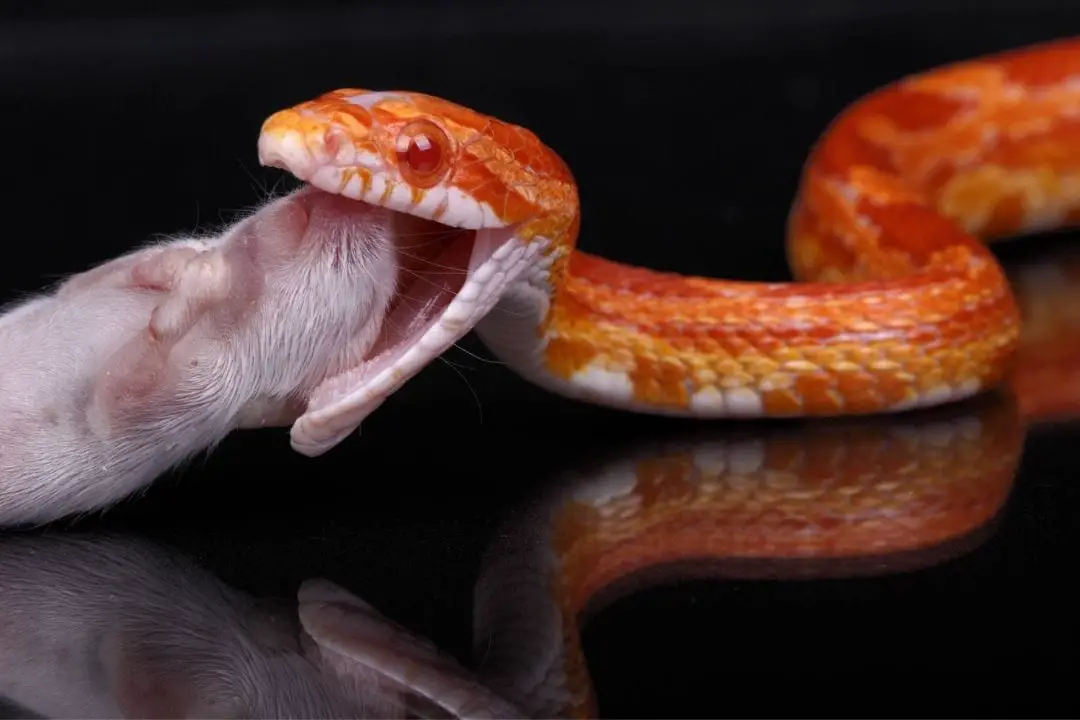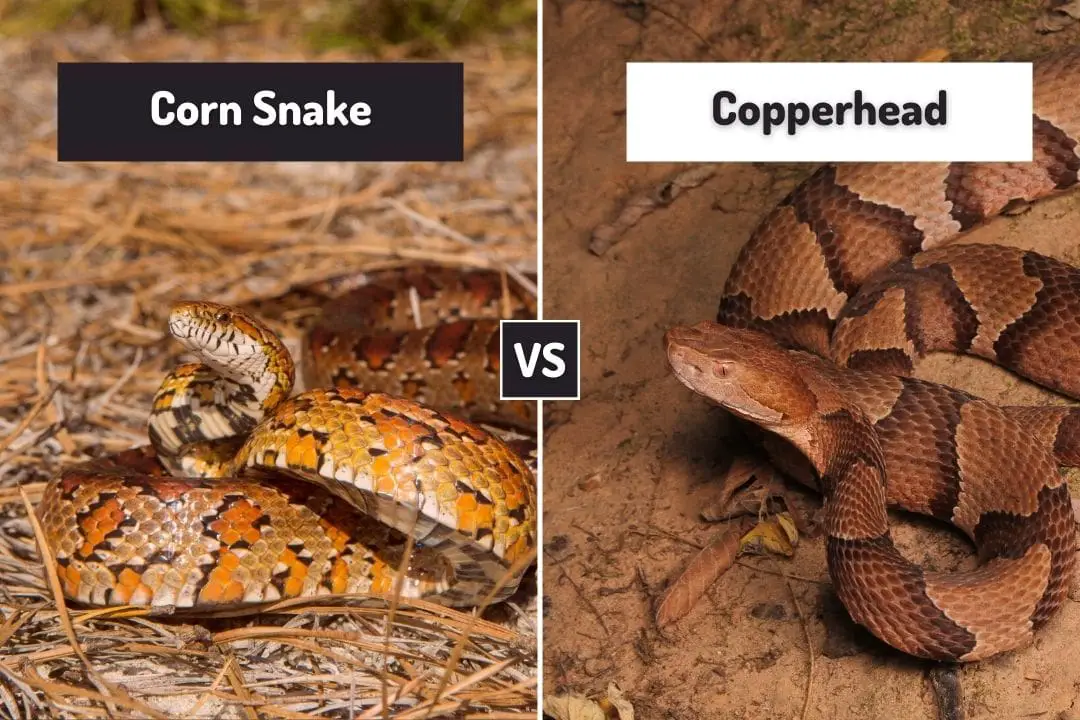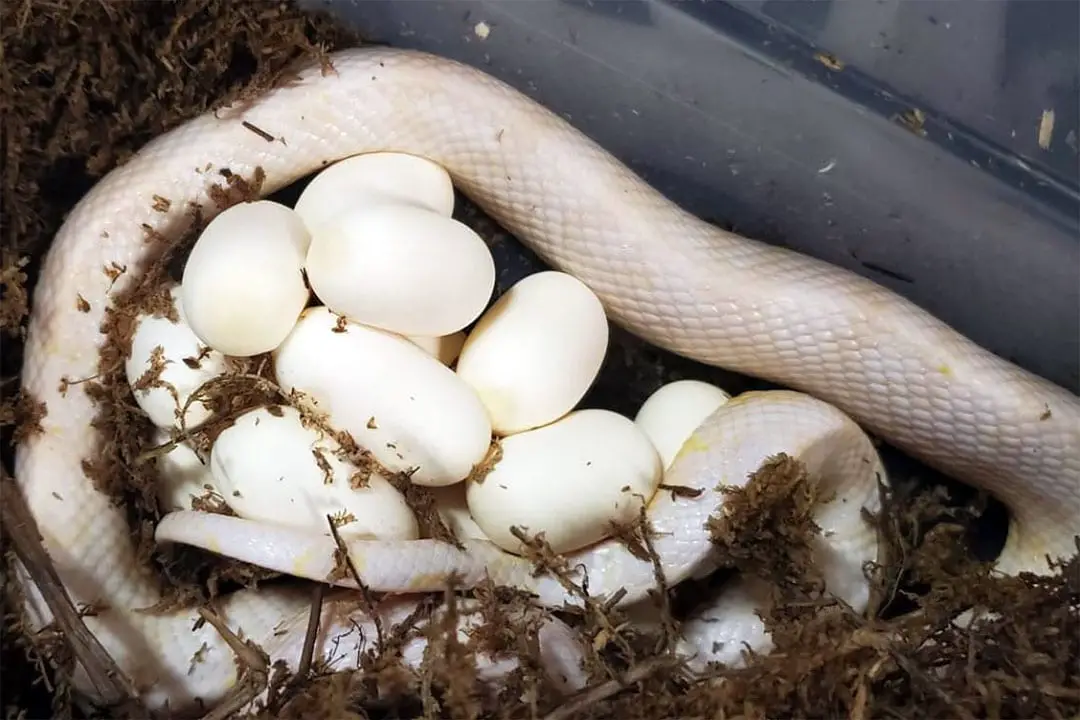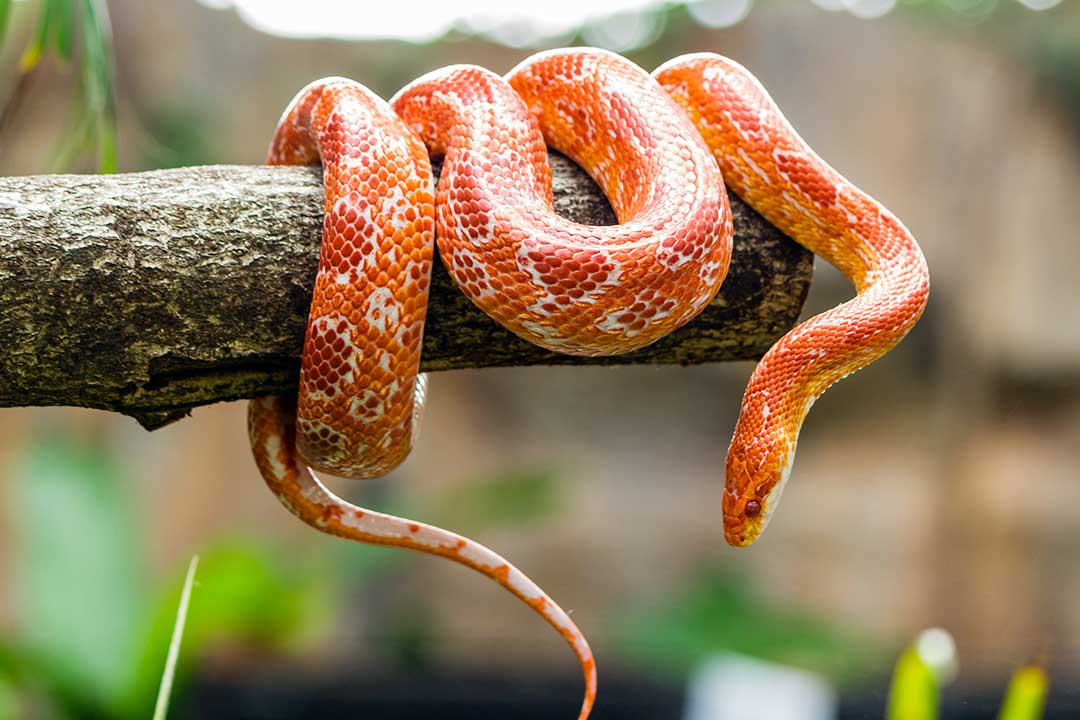If your corn snake isn’t eating, it can be a worrying experience. There are many reasons why your snake may not be eating. This can range from pickiness about food, to care issues, to illnesses.
Read on to learn more about why your snake may not be eating. Just remember that if your snake is showing signs of illness or is dropping weight, you should take your pet to a qualified reptile vet.
Everything you need to know about caring for Corn Snakes in captivity:
Read our Corn Snake Care Sheet (Complete 101 Guide)
1. Your Snake is Too Cold
Improper conditions are one of the biggest reasons your snake may not be eating.
If the tank is too cold, your snake can’t digest properly. They will be reluctant to eat because of this. Corn snakes also enter brumation when the temperature drops. Corn snakes are native to North American and can be found from New Jersey to Florida. In the colder parts of their range, they brumate during the winter.
This means they don’t eat and will sleep for long periods. They will only wake up long enough to drink before sleeping again. Corn snakes will be less active in more temperate areas and eat less often as the temperature drops.
If your snake’s habitat is too cold, it will try to enter this state and eat less.
Fix the temperature and your snake should eat again. The tank should be at 85 degrees on the warm side and 75 on the cool side. Your humidity should also be between 40 and 50%.
2. Offering Food Too Often
If your snake is still digesting, it will likely not want to eat. The easiest thing to do is wait a day or so after the snake has passed feces before trying to offer food again.
3. Your Corn Snake is About to Shed
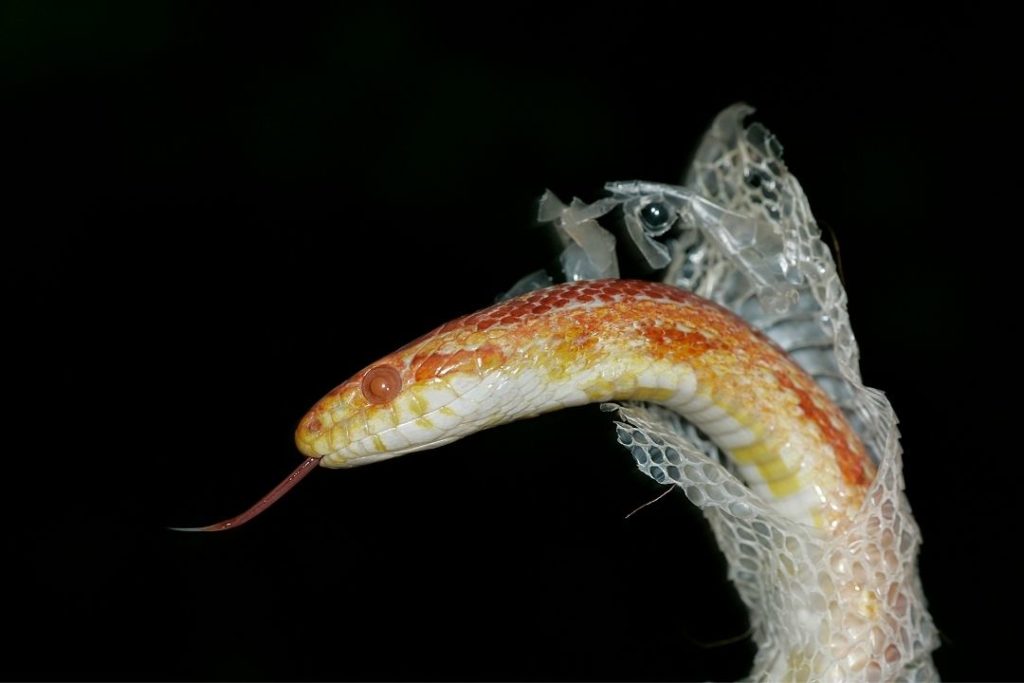
A snake that is about to shed will likely refuse to eat. You can try again after the shed is completed. Make sure you have the humidity at the right level since a stuck shed will harm your snake.
4. Prey Pickiness
Hatchling snakes can be picky when it comes to food. You should make sure that the prey you are offering is no more than 1.5x wider than the widest part of your snake.
Prey that is closer to the width of the body may be more attractive to a reluctant feeder. For frozen food, you need to thaw and prepare it properly.
You should let it thaw for a day in the fridge, then put it in a BPA-free bag and submerge it in hot water until it is about 100 degrees. Then you can offer it to your snake. If it is still reluctant, try using feeding tongs to wiggle the prey to make it seem alive. You can also increase the scent by slicing the skin of the mouse.
Freshly killed prey is another option, or live prey. Just remember that live prey can fight back and injure your snake. Never leave your snake alone with live prey. You should monitor the interaction to make sure your snake isn’t harmed. You should try to move your snake to frozen prey if at all possible for safety.
If your snake is still reluctant, you can look into other prey like chicks for adult snakes. You should only feed it once to get your snake eating again.
Some corn snakes are also picky on fur, so you can try feeding a hairless rat pup that is a similar size. Just remember to feed less often since feeding rats often can make your snake overweight.
Your reptile vet can also help with picking the right food options for your snake.
5. Gravidity
Gravid corn snakes or snakes that are preparing to lay eggs will frequently not want to eat. Your snake may lose interest in food until after her eggs are laid. Make sure she has an appropriate spot to lay her eggs.
Once she has laid them all, you can try offering food again. Make sure to offer a bit more often so she can regain all the nutrients she lost to her eggs. Your snake should show signs of hunting behavior like frequently searching her enclosure when she is ready to eat.
6. Your Snake is Ill
Illness is another reason why your snake may not be eating. There are a number of reasons your snake may be ill.
Mouth rot is an infection that can be painful enough for your snake to refuse to eat. If you suspect it, take your snake to a reptile vet immediately. Respiratory infections also cause a loss of appetite.
Signs include runny nose or eyes and wheezing. If you notice your snake is breathing through its mouth, that is another sign.
Parasites can cause appetite issues. Your vet can check a fecal sample to see if this is the problem. An intestinal blockage can also make your snake reluctant to eat.
This is frequently caused by ingesting substrate. Your snake needs immediate care to fix this problem. Dehydration can also cause constipation that will make your snake stop eating. If you suspect any illness in your snake, be sure to take your snake to a vet. You should already have a reptile vet on call in case of any health issues with your snake.
7. Other Causes
If you have gone through everything else, it could be age. Older snakes want to eat less. If your vet has confirmed your snake is otherwise healthy and your conditions are right, it may just require a wait.
An adult snake can go 2-3 months without eating without any real harm.
If your snake is losing weight and looking thin, your vet can try to force-feed them. Just keep in contact with your reptile vet and get a second opinion if you are really concerned.
Just remember to ask your vet if they are qualified for reptiles. Not all vets understand the unique needs of snakes, so going to someone with experience is best.
In Summary
Feeding issues can have both natural causes like brumation and care issues as well as illnesses. If you are concerned, having your snake examined by a trained reptile vet with corn snake experience can help. Comment below with any tips you have on helping your snake feed properly.
